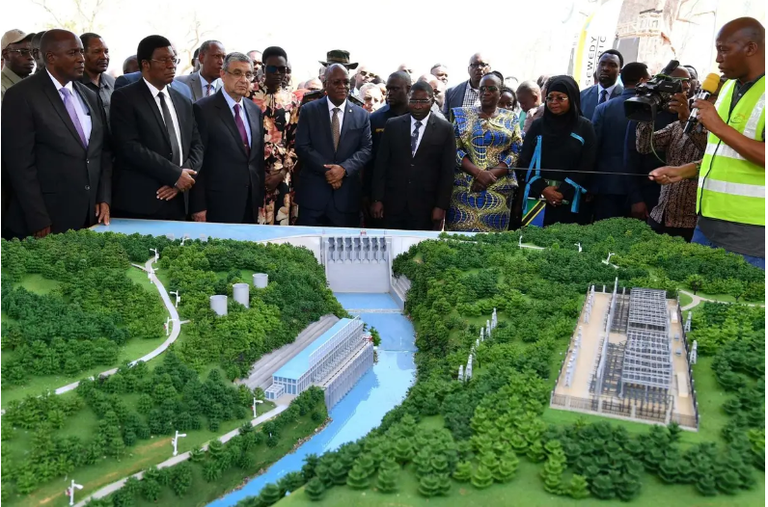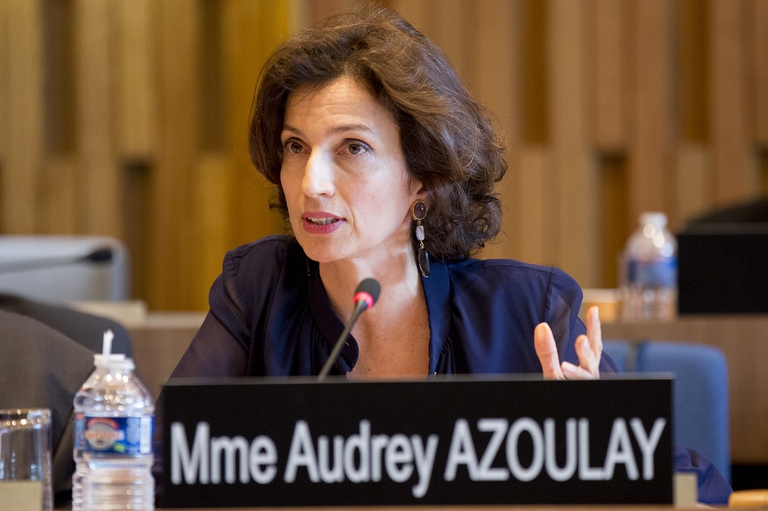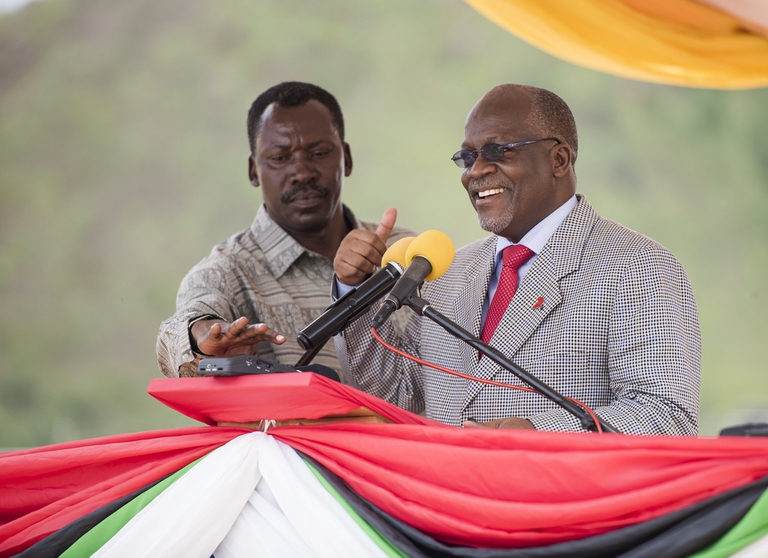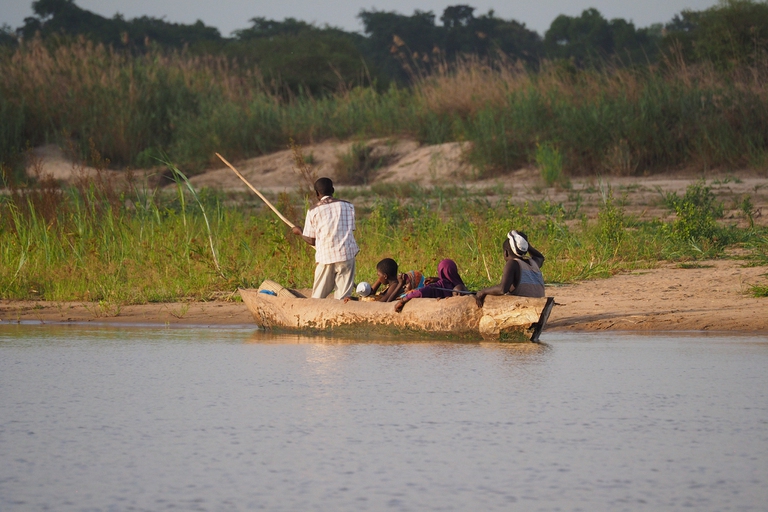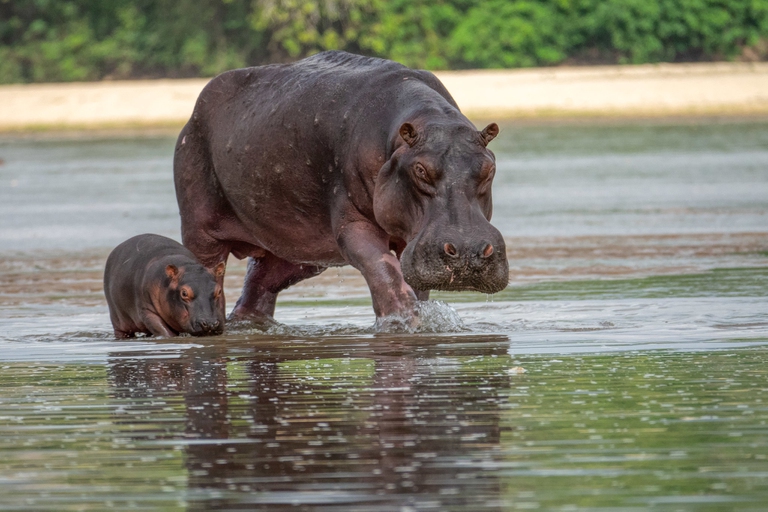
A group of experts in Tokyo suggested pouring radioactive water from Fukushima into the open sea. A marine biochemist explains the consequences of this absurd decision.
President Magufuli in unmovable in going ahead with the Stiegler’s Gorge dam despite conservationists’ warnings of the damage it will cause the Selous Game Reserve’s ecosystem and wildlife.
The Tanzanian government has inaugurated the construction of the so-called Stiegler’s Gorge dam, officially known as the Rufiji Hydropower Project. It will be built on the Rufiji River in the Selous Game Reserve, which has been a Unesco World Heritage Site since 1982 and is one of the most iconic wildlife areas in Africa relatively undisturbed by human activity. According to the authorities, the hydroelectric structure will be 130 metres high and 700 meters wide, covering an area of 1,350 square kilometres and with the capacity to hold back 34 billion cubic metres of water. The project, estimated to boost the country’s erratic electricity generation capacity by 2,115 megawatts, has been awarded to two Egyptian companies, El Sewedy Electric Co. and Arab Contractors via a contract worth a staggering 3.6 billion dollars.
Yet international experts have questioned its economic viability. They argue that costs could spiral to 9.8 billion dollars, more than doubling the present budget and making a return on investment anytime soon unlikely, given that the forecast completion date of 2021 will probably run over by at least six years.
Conservationists, who have quietly been celebrating a decline in poaching in Tanzania in recent years, see the construction of the dam as a catastrophe and have consistently called for the project to be halted. In a letter to Tanzanian President John Magufuli, Unesco Director General Audrey Azoulay expressed concern about the threat the dam would pose. “We’re concerned that a decision to go forward with the construction of the Stiegler’s dam is likely to have a devastating and irreversible impact on Selous’ unique ecosystem, and that it will jeopardise the potential of the site to contribute to sustainable development,” she stressed.
An independent review commissioned by the International Union for Conservation of Nature (IUCN) highlights the inadequacy of the project’s environmental impact assessment, in which specific impacts on the site’s World Heritage values haven’t been credibly addressed. Peter Shadie, Director of the World Heritage Programme at the IUCN, said the construction of a hydropower facility with large reservoirs inside a World Heritage site is incompatible with its status as a protected area, adding that the scheme would involve major infrastructure development and the deforestation of nearly 1,000 square kilometres at the centre of the Selous Game Reserve.
“The Stiegler’s Gorge dam project is unacceptable; it would cut the heart out of the Selous reserve, with catastrophic impacts on the site’s wildlife and habitats. The commitment to protect World Heritage sites for future generations is a collective one, which neither Tanzania nor any other country can choose to ignore,” he commented.
During the 41st World Heritage Committee session in Poland in July 2017, the Tanzanian government’s delegation asserted the country’s firm position to execute the project, arguing that the dam has been on its agenda since the 1960s, before the Selous Game Reserve was included in the World Heritage List. President Magufuli, on his part, remains defiant. “I believe that this is the start of economic liberation. In this country only 10 per cent of our people are connected to the national grid and this is unacceptable,” he stated. But after backlash from conservationists, he downplayed fears for the environment, saying that by providing energy the dam would deter locals from felling trees for charcoal. He added that the dam and the reservoir would cover only 3 per cent of the Selous reserve and that he wouldn’t listen to critics who spoke “without facts.”
In recent years, Magufuli has been accused of governing his country with an iron fist. Since he came to power in 2015, independent newspapers have been shutdown and more than 20 opposition MPs have been arrested. One of the president’s foremost parliamentary critics was shot 16 times in 2017 and is at risk for challenging the government. Questioning the relevance of the dam in public in the country is risky, as the government has gone to pains to point out. Kangi Lugola, the country’s Environment Minister, issued a warning in parliament: “The government will go on with the implementation of the project whether you like it or not. Those who resist the project will be jailed”.
Four decades ago the Selous Game Reserve was home to an estimated 110,000 elephants, thought to be the continent’s largest single population at the time. In 1982, Unesco recognised the reserve and its plentiful pachyderms with a well-deserved World Heritage Site listing. Sadly, since then rampant animal poaching has brought about a perilous decline in the area’s wildlife, including populations of the rarest animals such as the black rhinoceros, elephants, African wild dogs and marine mammal species such as hippos.
What is more, seventeen local companies have been awarded tenders to clear 1,500 square kilometres of terrain and cut an estimated 2.6 million trees, with an expected value of 62 million US dollars. An area roughly twice the size of Berlin will be deforested and will vanish under water due to construction of the Stiegler’s Gorge dam.
Although Tanzania’s need for more power in order to grow and sustain local industries is undeniable, the loss of part of the iconic Selous Game Reserve will be a bitter price to pay.
Siamo anche su WhatsApp. Segui il canale ufficiale LifeGate per restare aggiornata, aggiornato sulle ultime notizie e sulle nostre attività.
![]()
Quest'opera è distribuita con Licenza Creative Commons Attribuzione - Non commerciale - Non opere derivate 4.0 Internazionale.
A group of experts in Tokyo suggested pouring radioactive water from Fukushima into the open sea. A marine biochemist explains the consequences of this absurd decision.
A federal court in Washington, D.C. has struck down the Dakota Access Pipeline, following years of campaigning by the Standing Rock Sioux tribe.
The Scottish island of Eigg is self-sufficient for its energy needs, relying almost entirely on renewable sources, especially thanks to a coordinated community effort.
A large dam along the Luangwa River in Zambia would have posed a serious risk to local people and wildlife, leading hundreds of thousands to oppose it. A call to which the government responded by halting plans to build it.
The first one megawatt solar power plant in the Chernobyl exclusion zone has become operational. This is the first step in a renewable energy development project promoted by the Ukrainian government in the area.
A tanker exploded at a gas and petrol station in Nigeria’s Nasarawa state on the 10th of September, killing 35 people and leaving some burned beyond recognition; 3 citizens had several spine and brain injuries, 2 of them are still on Intesive Care Units. Fela Habila , a local singer, is now stable and out of danger but
The largest tidal power plant in the world will be built in the Larantuka Straits. It will serve 100,000 people and help overcome some of the challenges of energy provision in Indonesia.
Robben Island’s solar energy micro-grid project will produce almost one million kilowatt hours of electricity annually, significantly reducing the cost and impact of buying diesel.
The Balikpapan oil spill off the coast or Borneo in Indonesia covers 120 square kilometres. It has caused the death of 5 people, health and economic problems for local communities, as well as threatening wildlife and local ecosystems.
